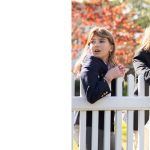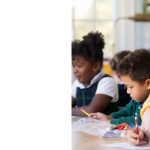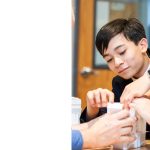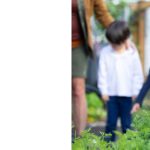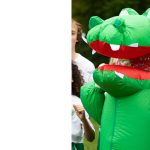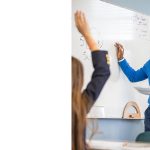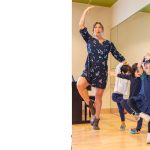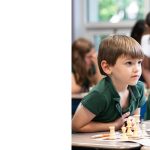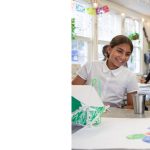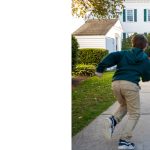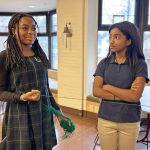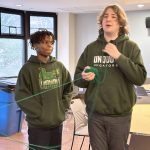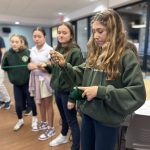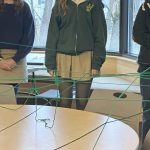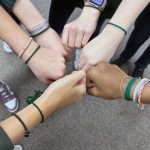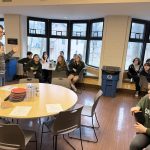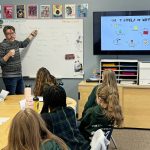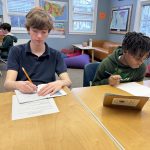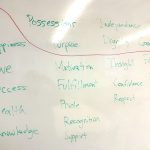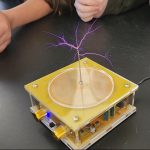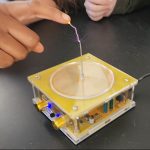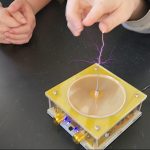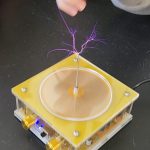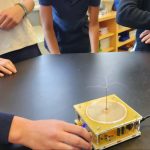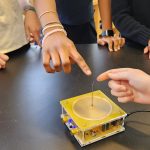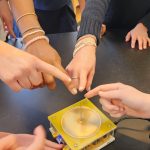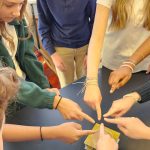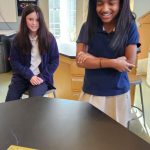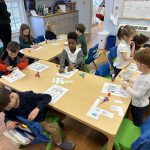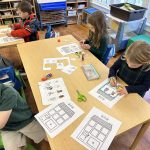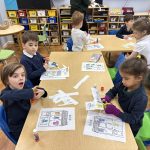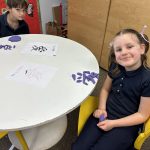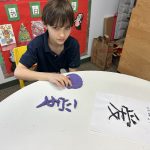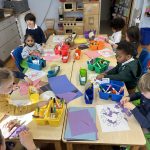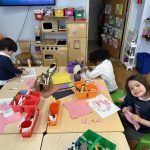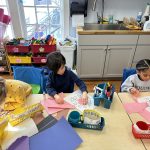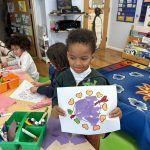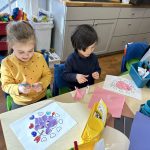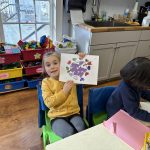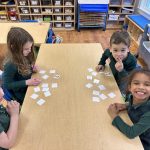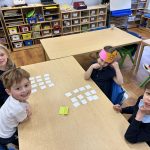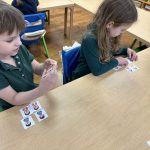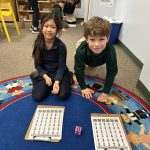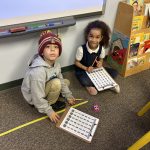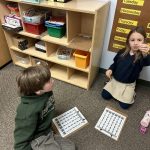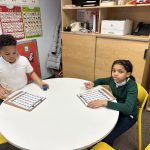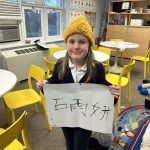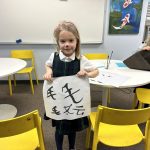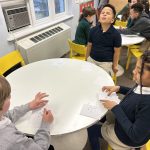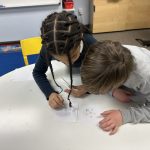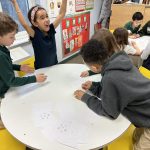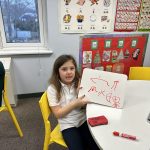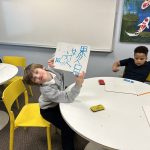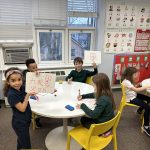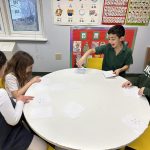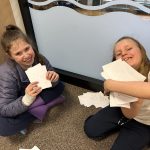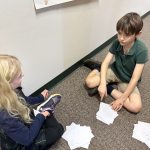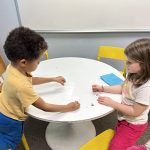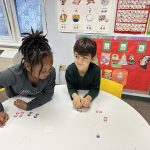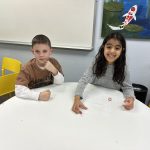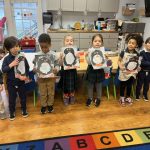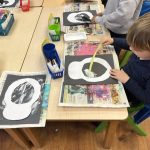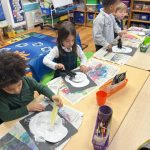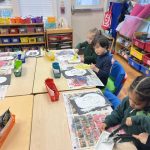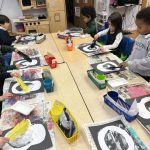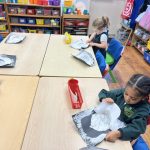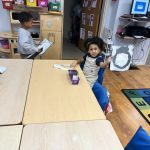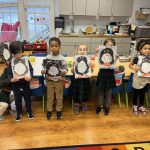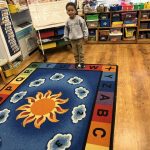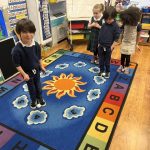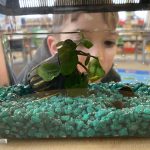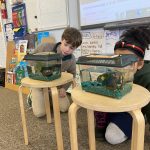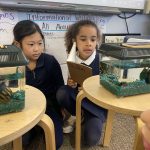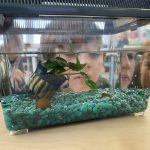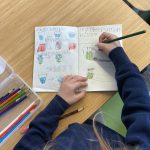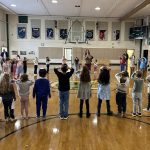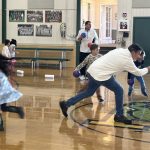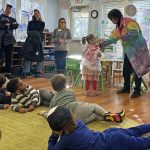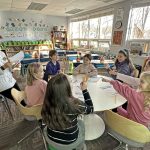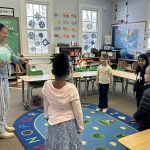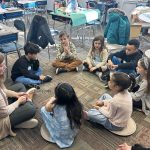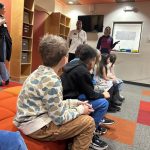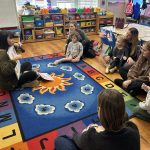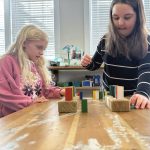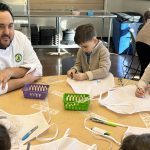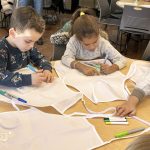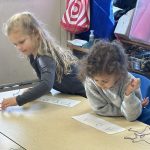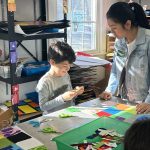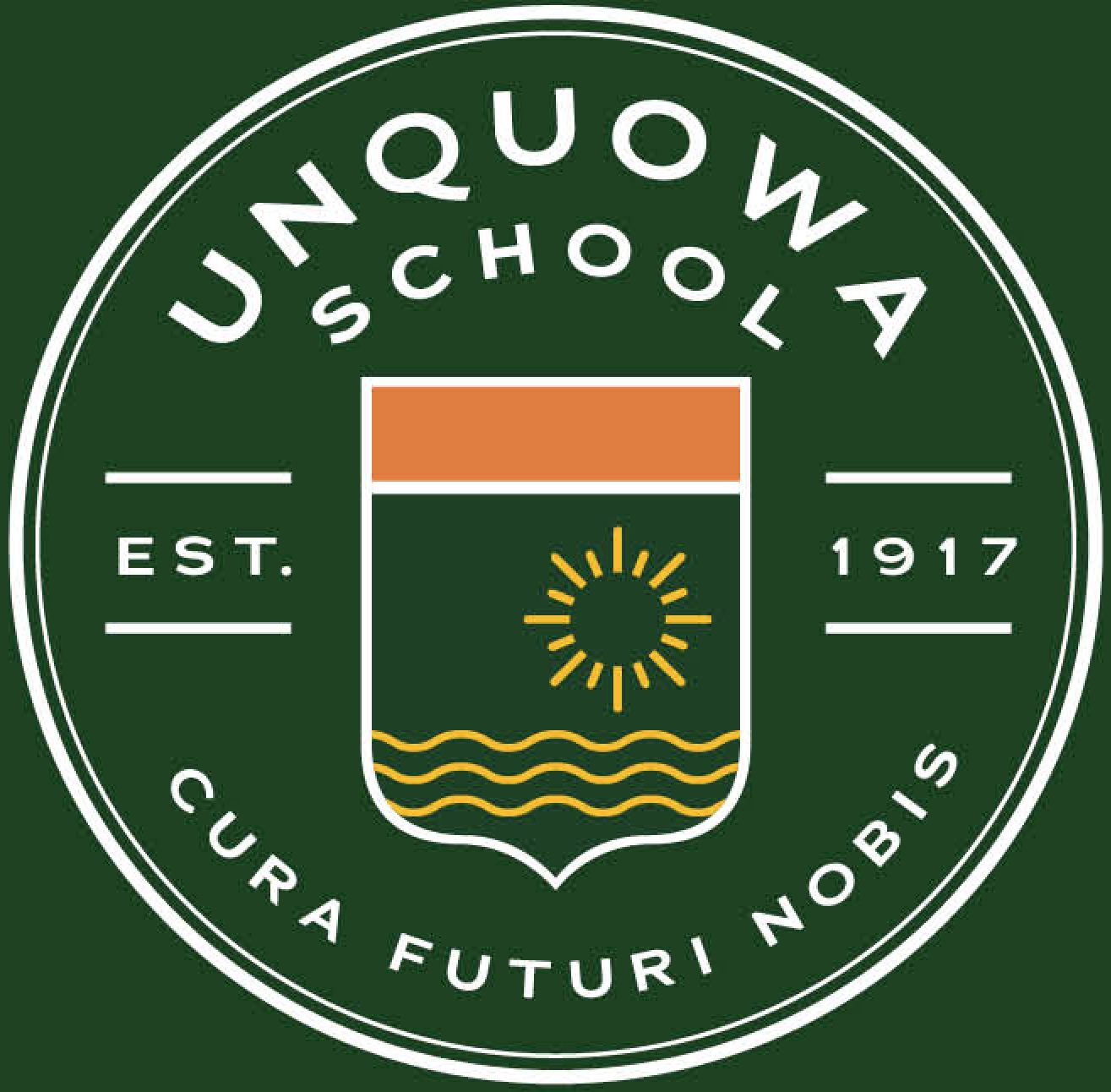Life Worth Living – Workshop Kick-off
Posted by Ariel WarshawOn Friday, February 2nd, 8th graders embarked on their first Life Worth Living workshop, facilitated by Dr. Matthew Croasmun, Director of the Life Worth Living Program at the Yale Center for Faith and Culture, and Unquowa faculty, Eric Snow and Ariel Warshaw. This workshop is part of our Life Worth Living ethics series, which includes 3 full morning workshops, and 5 sessions during Advisory. Prior to this first 3-hour morning program, students had explored elements of their own identity through reflection and guided conversations in Advisory, and then considered how societal perceptions influence their identity and desires.
We kicked off the workshop with a team-building exercise that asked the students to consider an element of their identity, and then pass a skein of yarn to a classmate to do the same. The result? A web of yarn that connected each of us to one another – there were lots of knots, some areas with more or less slack, and places we needed to repair. This served to symbolize our interconnectedness with one another, and how we can overcome challenges within ourselves and between each other. We concluded this exercise by cutting the yarn and tying a piece around our wrists, as a reminder of these lessons.
Dr. Croasmun then shared what brought him to consider, “What is really worth wanting in life?” This opened up to a larger conversation with the 8th graders around the question: “What are things people want?” They brainstormed dozens of responses – money, success, happiness, fame, health – and then considered which of these are “means” versus “ends.” Is money the ultimate goal? Or is it a means to achieve something deeper or more worth wanting, like happiness or security? We finished this portion of the workshop by learning about “The 7 Levels of Why”, which pushed students to ask “why?” from their wants, to delve deeper into their own motivations and desires.
We spent the last part of our workshop engaged in a Reflective Structured Dialogue (RSD). Three simultaneous conversations were held and facilitated by Dr. Croasmun, Eric Snow, and Ariel Warshaw. The students in each group opened the conversation by responding to the question, “What does responsibility mean to you?” Then, 8th graders unpacked the following: “Who determines what is worth wanting in life? Why? To whom am I responsible? To whom are we responsible?” Their responses were incredible – nuanced, deep, full of contradictions at times, and beautifully, imperfectly human.
We finished our workshop by looking at a few philosophical responses to these questions, looking at perspectives from Confucius (responsibility to parents), Asad Tarsinn (responsibility to God or a higher power), and Henry Taylor (responsibility to self).
We will continue to build on the theme of responsibility and the question, “What does good life look like?” over the coming weeks. As 8th graders begin to make decisions around and prepare for high school, the topics we explore will be integral to their thinking around what they truly want and who they truly are. We can’t wait to continue learning and growing with them in this process!
Plasma: The Fourth State of Matter
Posted by Joshua Bartosiewicz- Tesla Coil on! The bolts of electricity are actually ionized (supercharged) gas particles also known as “Plasma” which is the fourth state of matter.
- Giving the ionized particles a spot to discharge. This just feels like a tiny poke!
- When there’s nothing for the charged particles to escape to, they will be discharged into the path of least resistance in the gas molecules in the air!
- Changing the power and frequency of the Tesla coil.
- Everyone wants to feel the power of the Tesla coil!
- “Wow, that’s crazy it’s like mini lightening!”
As the 8th graders continue to venture into the realm of Chemistry, they’ve been learning about the states of matter and phase changes. Most people are aware of the three states of matter known as “solids, liquids and gasses”, however, there’s a fourth state of matter known as “plasma.” Not to confuse this with the plasma in our blood (they’re different), but the fourth state of matter called plasma is essentially supercharged gas particles. This state of matter makes up almost 99% of all matter in our universe! Here, on Earth, plasma can be seen as static shock, lightening, the aurora borealis or even in light bulbs and TVs!
In science we were able to utilize a Tesla Coil which was designed by Nikola Tesla in the 1800s to observe plasma in real life. When the machine was turned on, it starts producing electrical currents and builds up charges. The charges are discharged into the air around it, creating mini bolts of plasma. Students were able to manipulate where the discharges were released by moving their fingers to and from the coil. The discharges were hardly noticeable if they were even felt at all due to it being such a low intensity. The Tesla Coil allowed students to witness plasma in real time.
I Love My Family!
Posted by kellyyehRecently, in Lower School Mandarin class we learned about family members. We all had fun with many games and activities, including playing spot-it game cards, rolling and reading, making family trees/houses, playing Play-Doh Chinese Characters, writing calligraphy, and singing songs. Through games and activities, students enjoy learning Mandarin and the students did a great job!
Penguin Process Art
Posted by Faith BarbutoIn PreK we have been studying penguins! I found a fun craft project that uses negative space to create a penguin. First I cut out some white outlines and taped them to black papers. One student astutely commented that they looked like white avocados! Next we used feathers to paint white paint all over the black paper and the white outline. When the paint was dry, we lifted off the white paper to reveal a black penguin shape that had been left behind. After adding some feet, beaks and eyes our pretty penguins were complete. We practiced being penguins, pretending to carry our eggs on our feet through the frozen tundra! It’s not easy being a penguin parent!
Exploring Aquatic Wonders!
Posted by Stephanie SatonickExcitement bubbles as students dive into the world of freshwater habitats! Students have been investigating how plants and animals live in different water habitats in order to get what they need. Second grade eagerly gathered around our new freshwater snails, wide-eyed with curiosity. Armed with magnifying glasses and notebooks, they carefully observed the snails’ slow movements, intricate shells, and how they interact with their watery environment.
Sneaking A Peek!
Posted by Karen WilliamsonOur Lower School students were excited to Sneak a Peek at what’s to come for the 24/25 school year by visiting with their future teachers and learning about what new, fun experiences begin when you move up a grade! Our Mandarin teacher highlighted our World Language Program for our future PreK students. Our Science Department Chair got future kindergarteners excited about science experiments. Soon to be first graders were introduced to the experience of having lunch in the dining room. Next year’s second graders worked on a fabric arts project in our Art Studio. Changing clothes for PE is a big change for our third graders, so our rising third grade class teamed up with our PE teachers. Fourth graders spend a lot of time in the makerspace working on STEAM projects, so Saturday, our future fourth graders did too! What’s more fun than spending a Saturday morning at Unquowa?


